With the huge success of the other models in Hyundai’s showroom, it would be easy to forget the presence of the Santa Fe, its large seven-seater flagship SUV. That’s rather harder to do with this latest generation version though with its sharp-styling and, for the first time, the offering of hybrid and plug-in hybrid versions.
The combination of plug-in hybrid technology and seven-seater family practicality will hopefully also help to open up electrification to more potential buyers too.
HYUNDAI SANTA FE PHEV – DESIGN
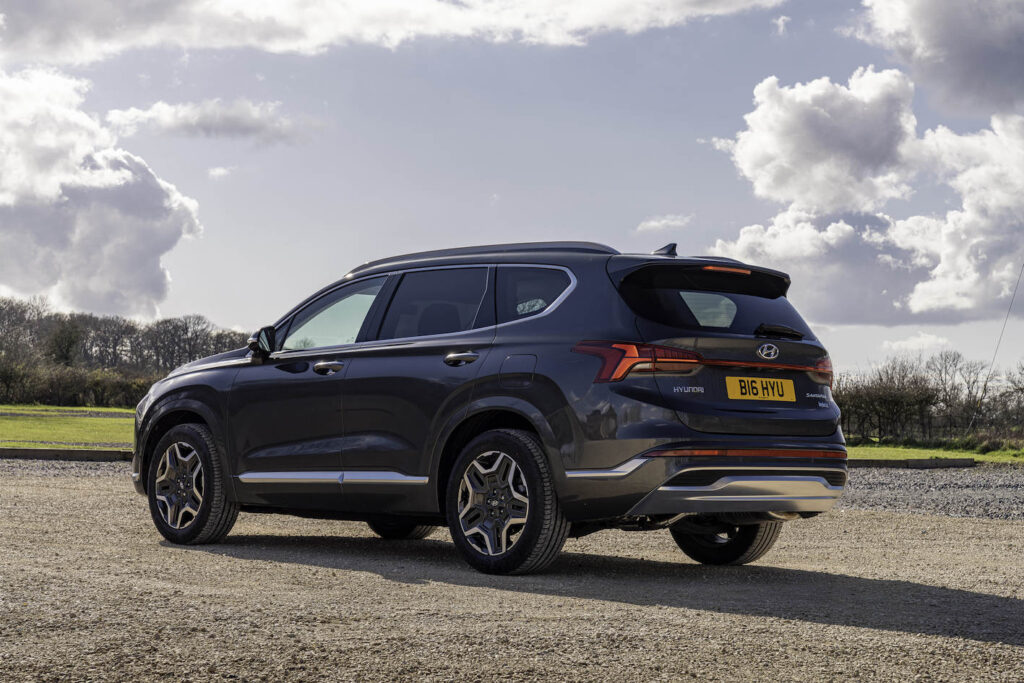
There’s no question that the styling of the new Hyundai Santa Fe is certainly clean and smart, especially with its wide, prominent front grille. It’s certainly not unpleasant to the eye, but it does lack the same on-road presence of the smaller Tucson or the sheer alternative look of Hyundai’s Ioniq 5 even with that enormous front grille.
It’s a fine line to walk in the sector between standing out and making a bold statement while also being conservative enough to ensure plenty of showroom appeal. This latest Santa Fe certainly will turn heads, but getting past that American-ised style front grille might a stretch too far for some.
HYUNDAI SANTA FE PHEV – POWER AND RANGE
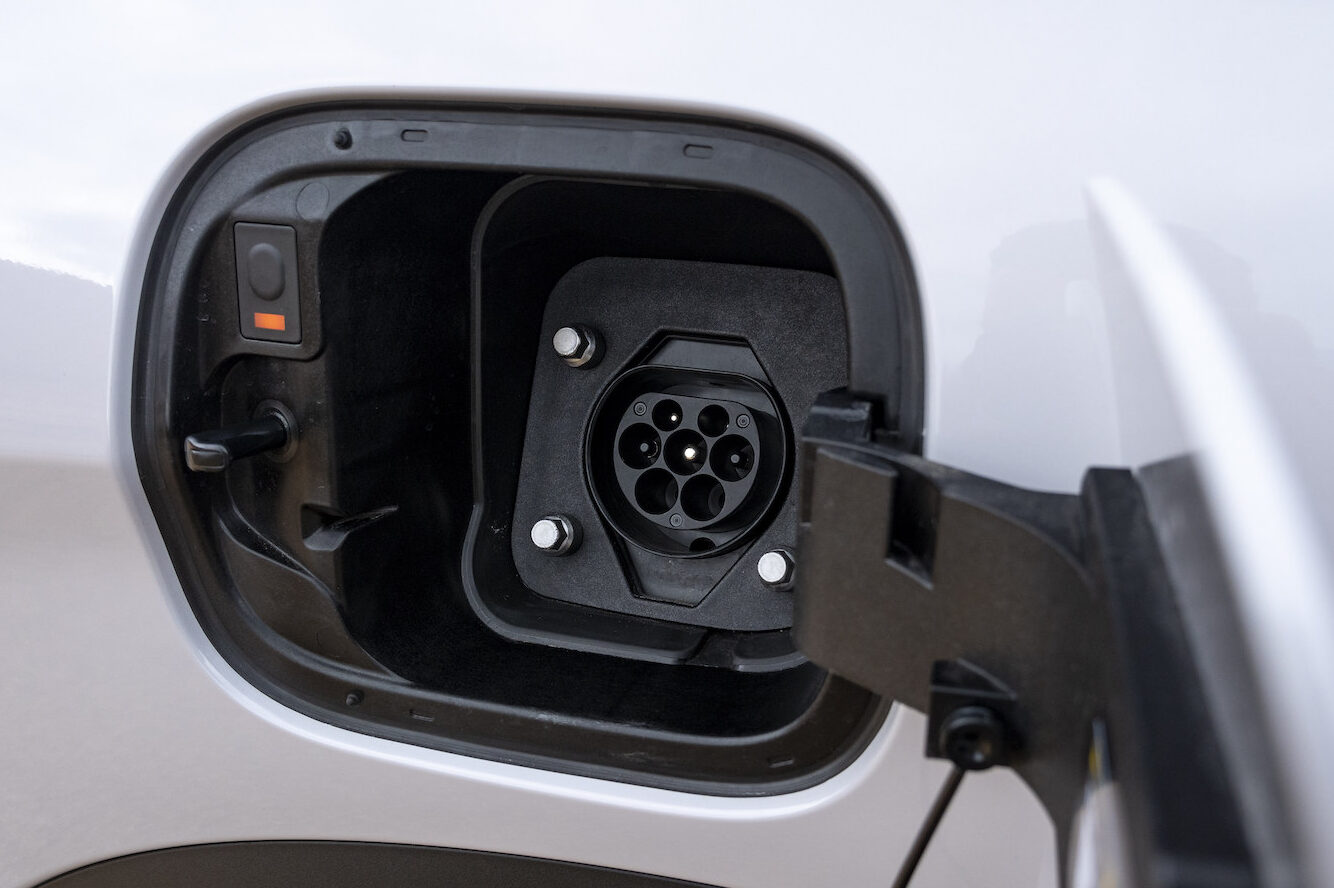
The Hyundai Santa Fe Plug-In Hybrid gets the same 1.6-litre petrol and 13.8kW battery to produce 265bhp as its smaller Tucson stablemate with a six-speed automatic gearbox. It also gets four-wheel drive as standard, unlike the non-plug-in hybrid Santa Fe which gets a choice of two or four-wheel drive.
While weighing in at around 150kgs heavier than the hybrid however, this plug-in hybrid Santa Fe can get from 0 to 60mph in 8.8 seconds and on to a 116mph top speed with 37g/km emissions and an all-electric range of 36 miles.
While Hyundai claims an average fuel economy of 173.7mpg, the real-world reality is rather different and we averaged a still-respectable 62mpg during our short drive. Hyundai also claims an electric driving efficiency of 3.4mls/kWh however which is pretty good for what is, after all, not a small car.
On a standard 7kW home wallbox, Hyundai quotes a recharging time to 100pc of three hours and 25 minutes, with a time of just over five hours when using a regular three-pin household plug socket.
HYUNDAI SANTA FE PHEV – ON THE ROAD
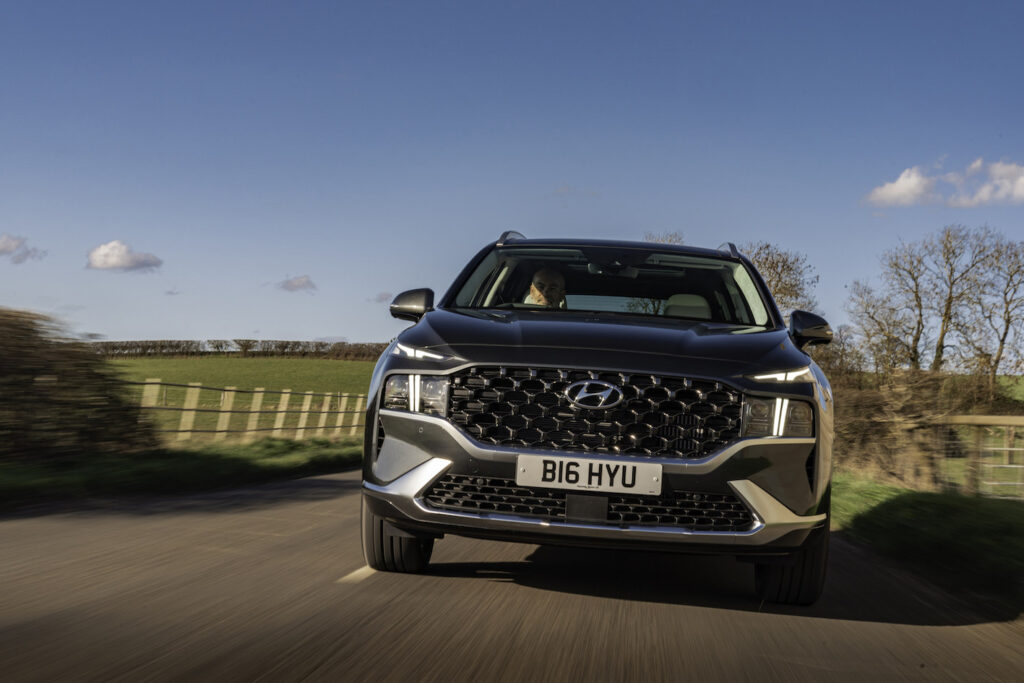
Much like its smaller Tucson sister, driving the Santa Fe is a pretty clinical experience. It’s not a car that you’re going to buy for its dynamic driving feel, but then again few seven-seater SUVs are.
It definitely feels like a large car on the road and while there’s little body roll through bends, this isn’t the kind of wheels that you’ll be cornering on its door mirrors with regularity. There’s not much feedback through the steering wheel or the driver’s seat about what the car is doing beneath you. But while the Santa Fe may not be the most involving car to drive, it’s certainly one of the most comfortable with an excellent ride quality.
Again, as you might expect given that they share the same engine and electric motor, the switch between electric and petrol power is as seamless as in the Tucson. The only drawback is that under heavy acceleration when the engine is engaged, the relatively small size of that 1.6-litre engine in such a large car can be rather exposed with it being slightly more vocal than is ideal.
There’s some nice driving details though, including pin sharp screens for the instrument panel in front of the driver and also the central infotainment and sat nav. There are also indicator cameras that bring up the view in the driver’s display which take some getting used to, but we rather liked.
HYUNDAI SANTA FE PHEV – INTERIOR
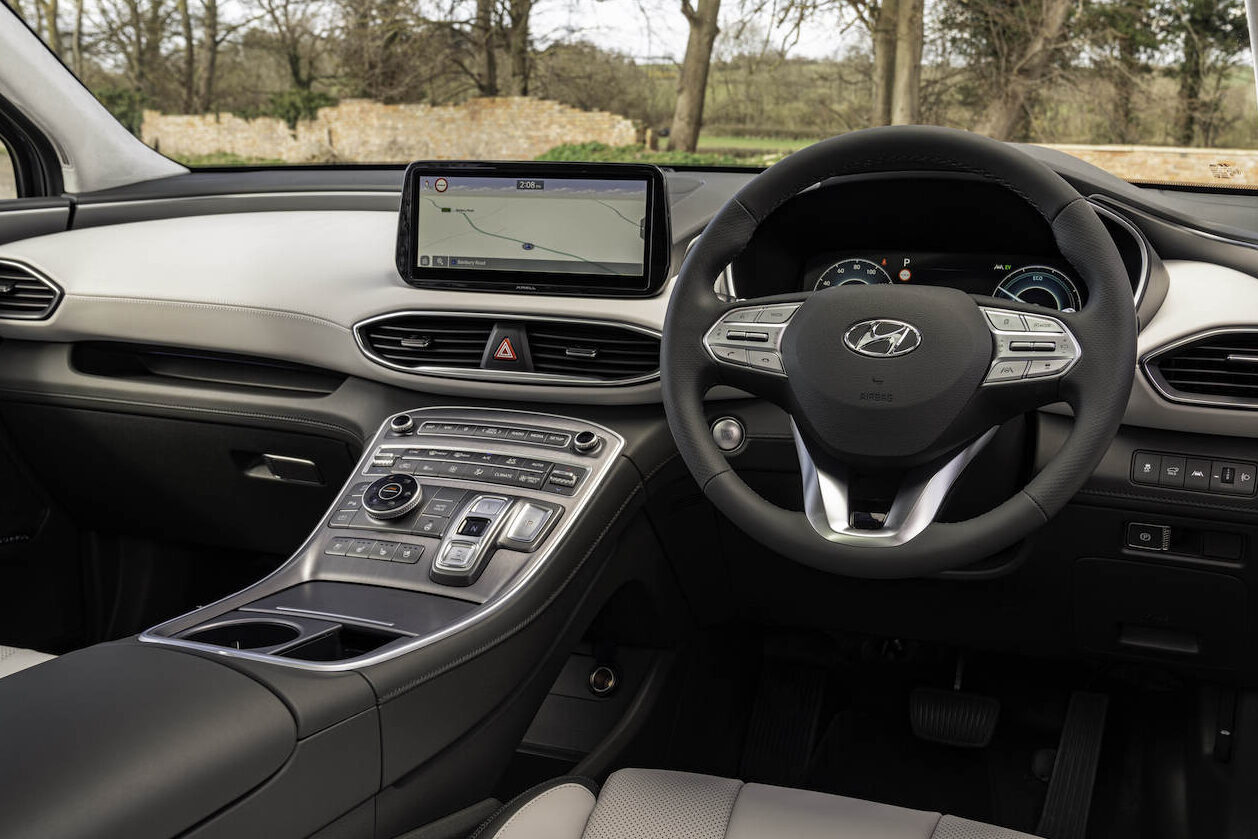
When much of the industry has moved towards placing more and more controls onto touch-screens, the Santa Fe’s interior makes a welcome return of traditional, real-world buttons.
That said, you can have too much of a good thing and here it can sometimes feel like there’s more buttons than Cadbury’s with them littered across the transmission tunnel and even Drive, Reverse, Neutral and Park being engaged with buttons rather than the more usual gear selector.
Overall though, it does work well and drivers will soon get used to the positioning of all the controls – unlike having to constantly scroll through on-screen menus. While there’s also little doubt that the build quality has improved immensely, some of the quality of the plastics might not bear scrutiny alongside some of its premium rivals at this level.
Crucially though, the big Hyundai boasts a decent amount of space, plus there are also seat heaters and USB charge points for those in the back – crucial for longer journeys with all the family on board.
The boot is largely taken up by the third row pair of seats, but the Santa Fe has a decent 571 litre boot and 1649 litres with all the rear seats folded down accessed via an electric tailgate. Plus there’s an additional Isofix child seat point in the front passenger seat alongside the pair in the middle row.
HYUNDAI SANTA FE PHEV – SUMMARY
Giving Santa Fe buyers the choice of hybrid and plug-in hybrid technology for the first time is without question a wise move for Hyundai.
This plug-in version might wear a hefty £3700 premium over and above the standard hybrid but, driven the right way, there’s little doubt that buyers would see that paid back during the course of ownership. And that, of course, is before you’ve even got to the fact that the Benefit-in-Kind company car tax rate is just ten per cent versus a minimum of 32 per cent for the hybrid.
For those after a family workhorse or a good plug-in hybrid for towing, there’s certainly a lot to like about this new Santa Fe especially with its stronger looks and excellent build quality throughout.
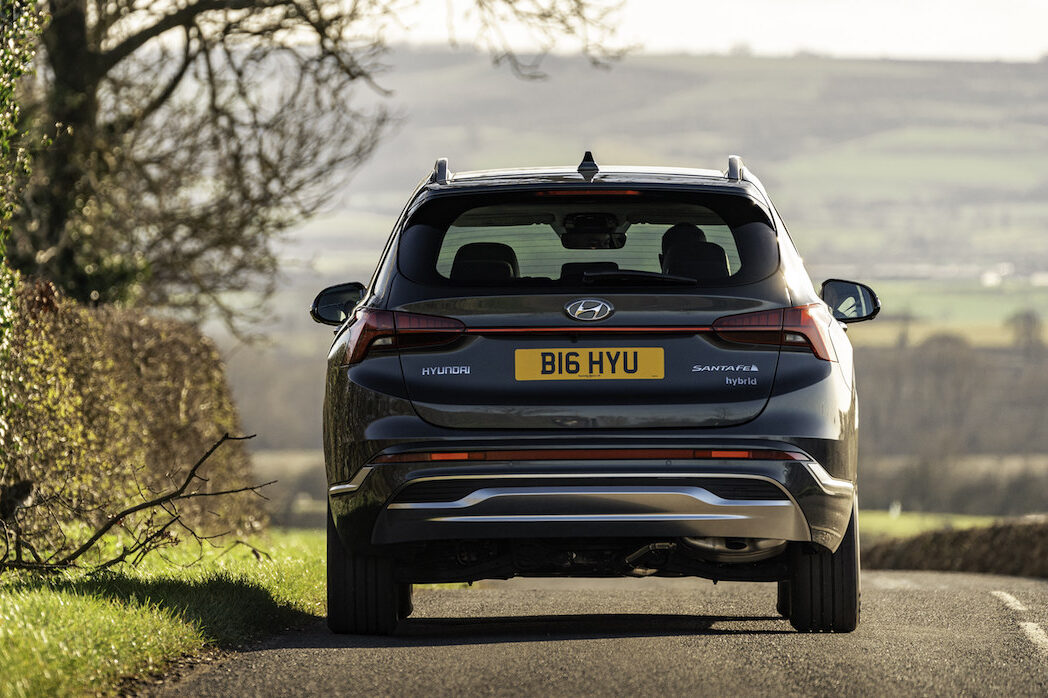
FACT BOX
Model: Hyundai Santa Fe Plug-In Hybrid
Price: from £45,660
Power: Petrol – 1.6-litre; Battery – 13.8kWh
Electric range: 36 miles
Average fuel consumption: 173.7mpg
CO2 emissions: 37g/km
Rating: 8/10

